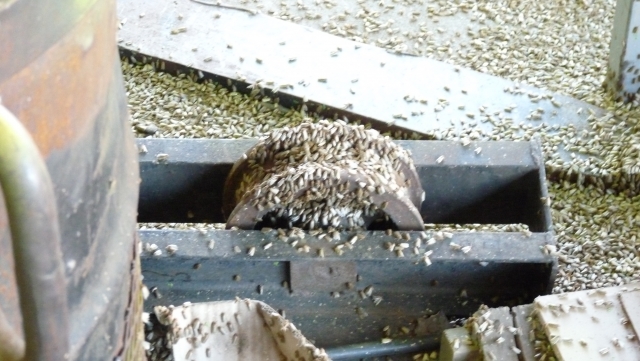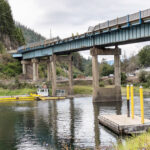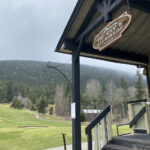Taking the wind out of budworm infestation
Ten thousand hectares of forest were targeted in the first controlled spray in the Kootenay Boundary forest district for Western Spruce Budworm over the weekend.
In a what is described as a heavy infestation, over 40,000 hectares within the Boundary timber supply area are being impacted by the budworm which defoliates Douglas fir, sub-alpine fir, spruce and balsam trees. Art Stock, entomologist with the Ministry of Forests, Lands, and Natural Resource Operations (MFLNRO) based in Nelson, said that the population is the highest they have ever seen in the region.
“We’re targeting areas where defoliation and where our egg surveys indicate that moderate to severe defoliation is expected this year,” said Stock. “We’ve had three outbreaks (in the history of the region) and they did some management spray around Grand Forks in the seventies. Since then, nothing. So this is definitely the biggest outbreak that we’ve had and it really came almost out of the blue.”
The Western Spruce Budworm has made areas of the Boundary and Okanagan regions home for many years. Moths in the thousands invaded businesses around Grand Forks last summer and triggered closer surveillance from MFLNRO during the fall.
Stock said it takes years for the moths to severely damage trees, mostly impacting their growth with not a lot of mortality. But smaller, younger trees in the lower canopy that are important to future tree stocks will see higher death rates.
“All kinds of environmental conditions converge and conspire to make a flush happen – an overabundance of food, or low predation by its natural predators,” added Gary Smith of Gaia Principles Intergrated Pest Management in Grand Forks. “They can fly quite a distance in search of places to lay eggs.”
The worms in the initial stages of life feed on new foliage only and the tree is usually able to survive the attack unless the worms attack repeatedly or feed on the old foliage.
“Some of the areas around Rock Creek are heavily infested and are not in the spray blocks,” Stock continued. “I am fairly confident that we will protect the areas that we treat, and I think there’ll be some movement (of the insects) after that. It definitely will slow them down when we treat them and that may do the trick.”
The spray, a naturally occurring bacteria specific to moths and butterflies called Foray 48B, is a focused pesticide that is quite safe, explained Stock. It is deployed from helicopters and they do not spray close to habitations or buildings. All the land being treated is public areas where high-value timber is located. Much of the infested lands identified are located on private property and will not be treated.
Kamloops and the Okanagan regions have been using this pesticide successfully for over 25 years and have seen good results in knocking back the insect’s advance.
Stock estimates that the budworm should decline naturally over the next four to five years, and that the treatments will minimize damage in the interim. Weather, of course, determines the cycle and warm, dry temperatures will increase populations.
Locals can expect to see the moths again this August as they take flight to find mates and propagate. Stock will be out in July and again in the fall to survey eggs to anticipate the future needs for continued spraying programs.






















